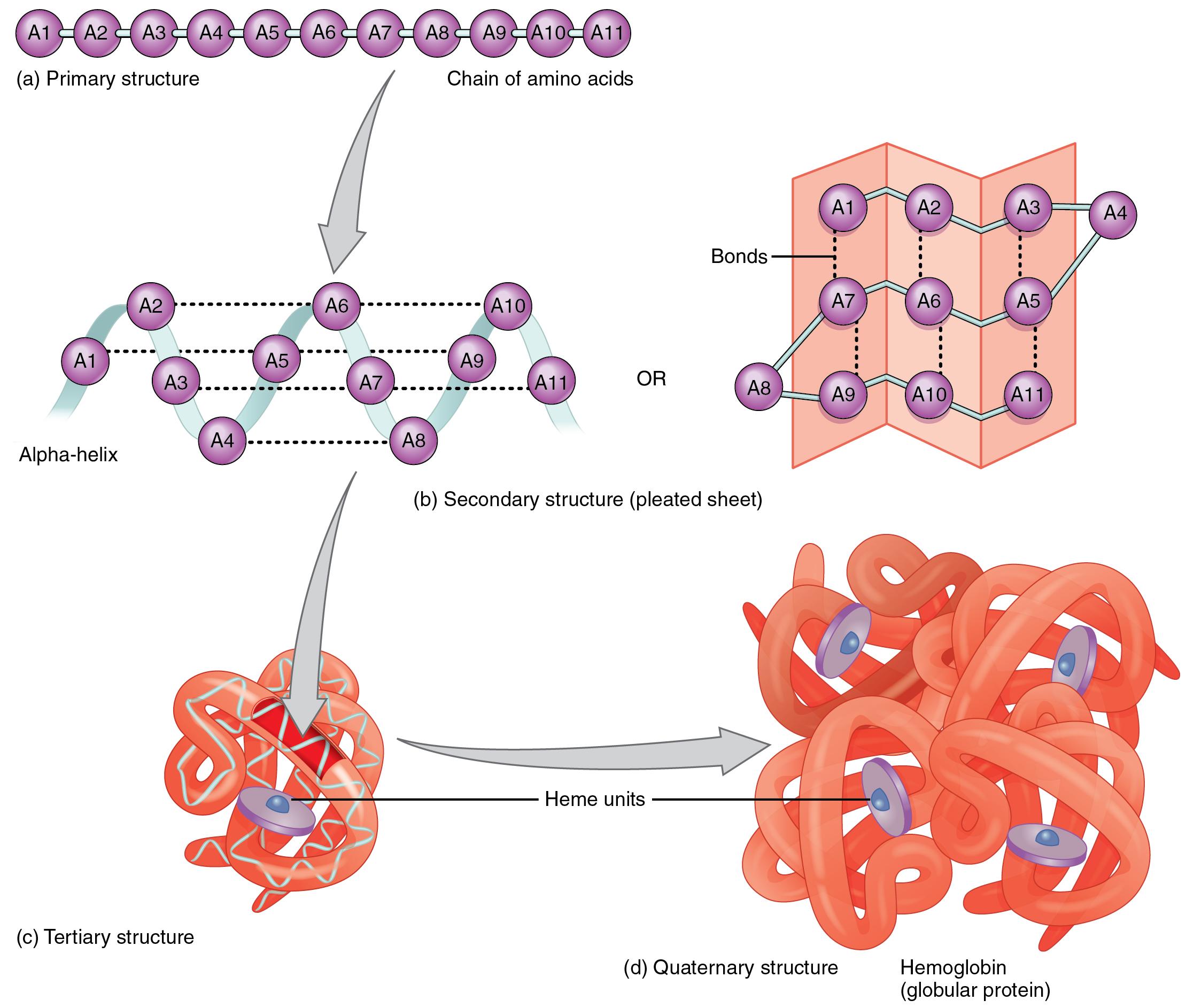

A change in nucleotide sequence of the gene’s coding region may lead to a different amino acid being added to the growing polypeptide chain, causing a change in protein structure and function.

The unique sequence for every protein is ultimately determined by the gene encoding the protein. Note that all disulfide bonds are the same length, but are drawn different sizes for clarity. Two disulfide bonds connect the A and B chains together, and a third helps the A chain fold into the correct shape. Two sulfhydryl groups can react in the presence of oxygen to form a disulfide (S-S) bond. The amino acid cysteine (cys) has a sulfhydryl (SH) group as a side chain. In each chain, primary structure is indicated by three-letter abbreviations that represent the names of the amino acids in the order they are present. Bovine serum insulin is a protein hormone made of two peptide chains, A (21 amino acids long) and B (30 amino acids long). The sequences of amino acids in the A and B chains are unique to insulin. The N terminal amino acid of the A chain is glycine, whereas the C terminal amino acid is asparagine ( Figure). For example, the pancreatic hormone insulin has two polypeptide chains, A and B, and they are linked together by disulfide bonds. The unique sequence of amino acids in a polypeptide chain is its primary structure. To understand how the protein gets its final shape or conformation, we need to understand the four levels of protein structure: primary, secondary, tertiary, and quaternary. If this active site is altered because of local changes or changes in overall protein structure, the enzyme may be unable to bind to the substrate. For example, an enzyme can bind to a specific substrate at a site known as the active site. As discussed earlier, the shape of a protein is critical to its function.


 0 kommentar(er)
0 kommentar(er)
